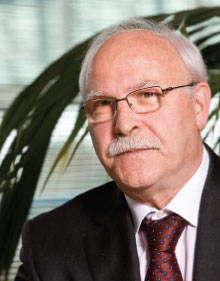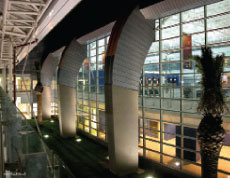
Mareddu: “A strategic planning of the terminal’s commercial area is crucial to ensure that we maximise our non-aeronautical revenues. Our commercial strategy is aimed at getting the most out of the available retail space, so we can continue to develop and improve our infrastructure in order meet the evolving demand of airlines and passengers, and therefore improve customer service.”
Sardinia has become a popular destination worldwide for its warm Mediterranean climate all year round, its stunning white sandy beaches, unique cuisine and wonderful hospitality. It is a destination people really dream about visiting. “If you wish to travel to Sardinia there is no doubt that Cagliari Airport is the best entrance to this beautiful island,” said Mareddu. “As for airlines, they will be pleased to know that, although we have a brand new terminal building, we actually are one of the cheapest airports in Italy. Airlines can also be confident that they will have outgoing traffic, as 60% of the island’s population live in Cagliari Airport’s catchment area.”
Expansion of the airport’s network through low-cost carriers has led it to develop a wide range of routes throughout Europe. That said, there are still a number of major cities and geographic markets that are underserved from Cagliari. “For example, Amsterdam, Copenhagen, Oslo and Stockholm,” explained Mareddu. “There is also potential to develop services to destinations currently underserved from Germany, including Hamburg, Hannover and Berlin. There is potential to develop services to countries such as Scandinavia, Poland, Romania and North Africa. Finally, frequencies to destinations that can be further increased include the south and north of France, as well as the UK.”
The airport company, Sogaer, invests in new routes which, based on a business plan and economic valuations, prove to be convenient for the development of its airport business. “Carriers interested in making a business proposal for the start-up of new services can contact us anytime,” commented Mareddu.
Non-aeronautical revenues are key to the financial success of airports. Cagliari Airport has seen consistent growth in its non-aviation revenues and the aim is that, by 2015, they will account for 40% of total revenues. “A strategic planning of the terminal’s commercial area is crucial to ensure that we maximise our non-aeronautical revenues. Our commercial strategy is aimed at getting the most out of the available retail space, so we can continue to develop and improve our infrastructure in order meet the evolving demand of airlines and passengers, and therefore improve customer service,” said Mareddu.

The airport company, Sogaer, invests in new routes which, based on a business plan and economic valuations, prove to be convenient for the development of its airport business. “Carriers interested in making a business proposal for the start-up of new services can contact us anytime,” commented Mareddu.
Cagliari Airport recently hosted the ACI EUROPE Regional Airports Forum, which brought together 150 delegates from regional airports, local and national authorities, the European Commission, airlines and ACI EUROPE World Business Partners.
Commenting on the main issues currently affecting regional airports, Mareddu said: “Over the last 10 years, traffic at European regional airports has increased by over 50% and in 2010, they handled over 680 million passengers. The introduction of low fare airlines has been the most important reason for such growth. The increasing numbers of passengers travelling from and to regional airports is not only a benefit for the airports and the airlines, but mainly for the economic development of the regions. However, regional airports are profoundly exposed to airlines changing their network in search of the best marketplace. The competitive pressures on regional airports keep increasing and yet, regulations in Europe remain largely inadequate for regional airports. That is why regional airports really require the support of the European Union and not overregulation, especially in relation to the community guidelines on start-up aid to airlines departing from regional airports.”







